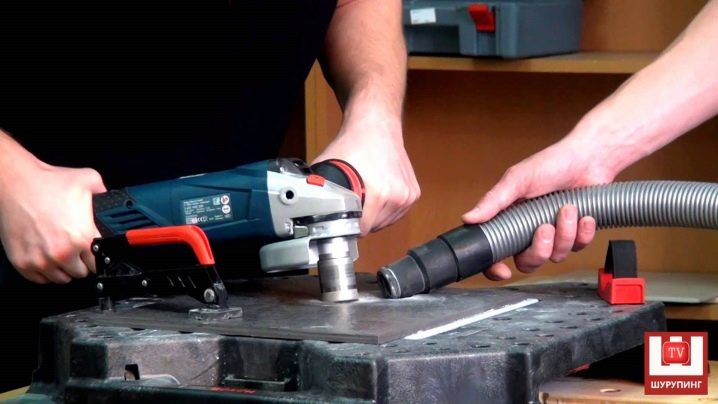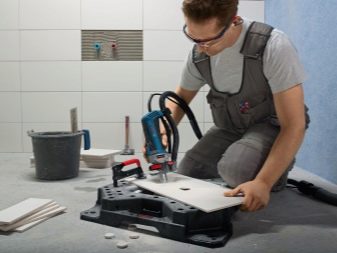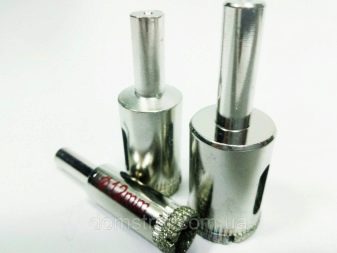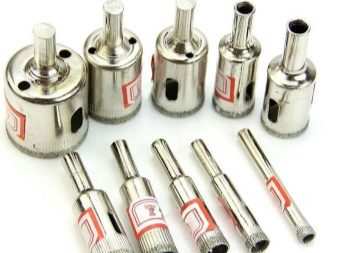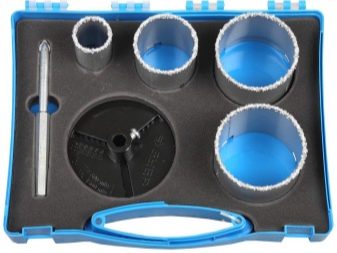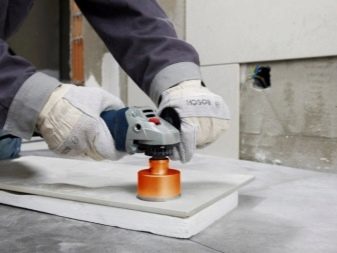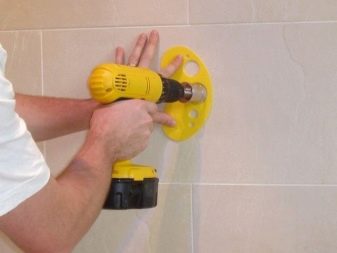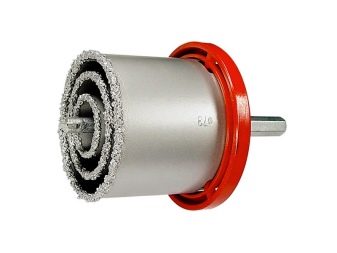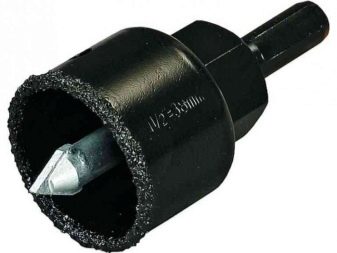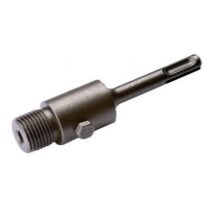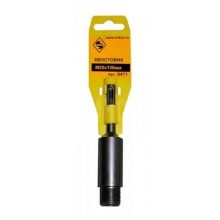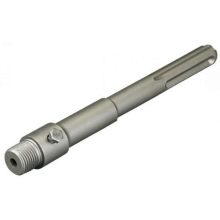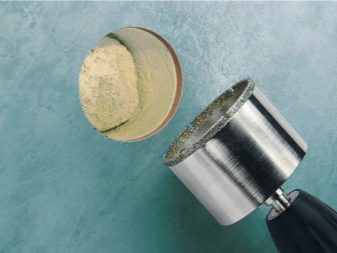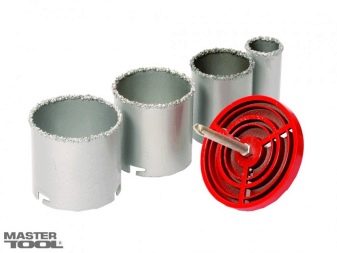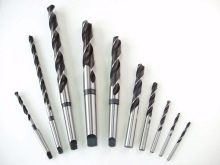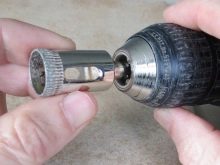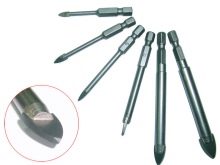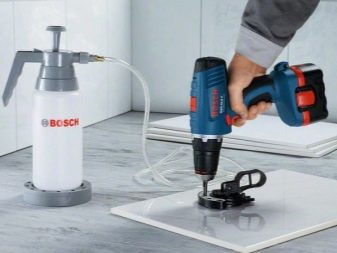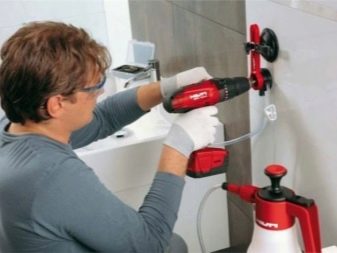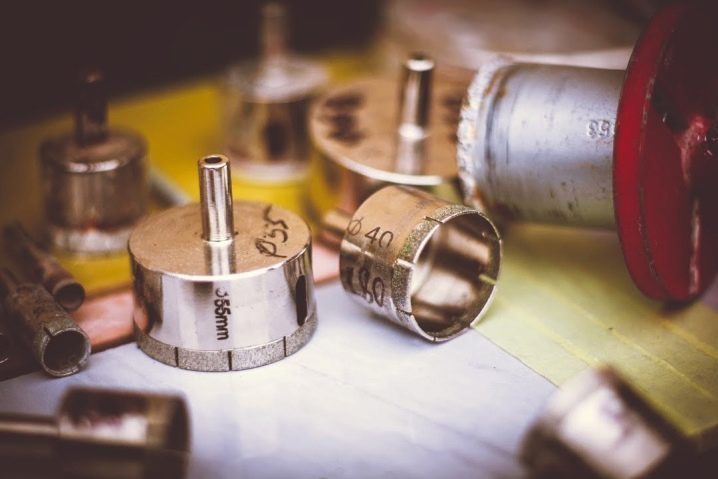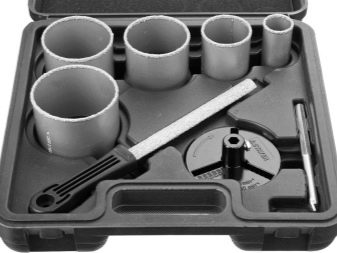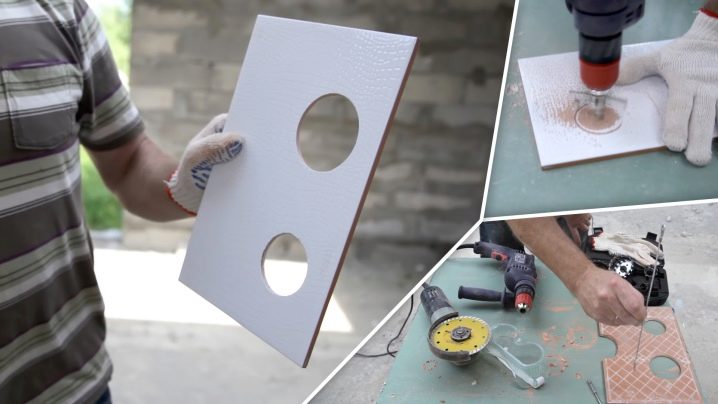How to choose a bit for drilling tiles?
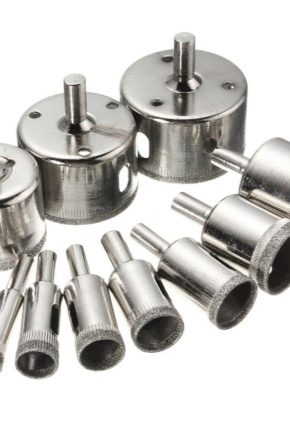
The most popular way to finish a shower or a bathroom is tiling. This material is perfectly cleaned and is considered the most waterproof, but the tile is difficult to process, especially drilling. Drilling holes is necessary to accommodate the mixer, sockets or wall cabinets and is carried out using special drills.
What it is?
Crowns for drilling - it is the nozzle on the drill in the form of a cylinder. On the one hand, these drills have devices for fastening in the punch or drill. On the other hand, the teeth, on top of which are often sprayed with a different composition.Such cutters are used for cutting ceramic, porcelain tiles, tile or mosaic tiles.
This drill nozzle allows you to get large-diameter holes and achieve a quality result without chips and cracks.
Cutting with a crown on a tile is possible only with a special drill or a special perforator. The first must have the option of low speed, and the second - the function off the "impact mechanism". Because of this, drilling holes, for example, under the switch or socket will be easier and more efficient. By the way 40, 68, 100 and 110 mm are considered the most popular crown diameters. This is enough to carry out all the work in the bathroom.
Species
Cutting any tile is quite difficult if you don’t know which tool to choose. In the Russian market, experts identify two of the most common and popular types of crowns. This is a diamond-coated nozzle with a tungsten-carbide coating.
Consider each type in more detail, we learn about the areas of their application, advantages and disadvantages:
Diamond Crowns
This type has a coating of diamond dust on the edge, which comes into contact with the working surface. This compound has high strength and allows better processing of hard tile coating. The industry produces diamond-coated crowns of various diameters: from 10 mm and more. Often they are sold in a set of several pieces of various sizes.
To work with such a detail, you can use a conventional drill, but in this case, the holes are often uneven, and the edges need to be improved. So the best option would be to use a stationary machine under the condition of cooling with water. In addition, to achieve the best result, the tool works at low speeds, and the cutters are fixed with special nozzles. They allow you to securely fix the crown in the proper place.
Of course, working with such tools implies certain experience. However, if paper adhesive tape is glued to the work surface, the crown will not slide off the smooth surface. In general, diamond dusting of crowns is considered the most reliable and effective, especially for ceramic tiles. The only drawback is their cost, which is higher than that of other species.
Tungsten Carbide Crowns
Designs of this type are characterized by the presence of a centering carbide drill, which allows the use of a simple electric drill. More often than others, this species is sold in a set of three or four nozzles of different diameters with one base.
With this kit you can drill a hole under the socket in ceramic, ceramic, tiled or mosaic tiles.
Unlike a diamond-coated drill bit, a tungsten carbide coating product is generally cheaper. Prices also depend on the diameter - the larger the size, the more expensive any type of crown. Another advantage is the lack of need for constant cooling with liquid. But, like the other kind, It requires the use of a drill speed below 500 rpm.
Tips for choosing
A tile is a very fragile and at the same time very hard product, so the process of cutting or drilling it is extremely difficult and requires care. With all the huge variety of drills in the modern Russian market to make the right choice of tool is not easy.The above-described crown-type attachments and its varieties, which are designed for drilling holes in various types of tiles.
The following describes the characteristics of crowns, which need to pay attention before purchasing in the store:
- The first thing to focus on is crown shankand, more precisely, its type, it must correspond to the type of connector in an electric drill or a perforator. Thin shank with a smooth surface is more common, but it is the most short-lived. Its unreliability is due to weak fastening in the tool. It is preferable to use the type with a three, and preferably with a hexagonal shape. It is more reliable in operation, although not as common.
- Diameter - This is the second important characteristic of the drill, it depends not only on the size of the drilled hole, but also the price of this device. The diameter of the crown is selected, depending on the dimensions of the products for which you need to drill a hole, for example, the diameter of the pipe or the size of the mixer. So, for installation in the bathroom sockets apply a crown d = 68 mm.
For convenience and proper selection, you can purchase a set with several different crowns for tiles.
- The third parameter in the selection of crowns - drill length It affects the quality of the result when working in an inaccessible place and depends on the thickness of the tile used. For example, for thin ceramic materials, a small drill length will be sufficient. Such a feature of the product as its value perfectly characterizes the quality. Thus, the most durable diamond crown is more expensive than other species. Therefore, it is better to choose crowns from trusted manufacturers and in specialized stores.
- One more significant parameter on which the selection of the cutter depends - type of drilling tiles. Distinguish crowns for wet and dry drilling. The first involves the supply of fluid for cooling the crown and washing off the tile dust during the drilling process. This type is considered the best and is usually used for diamond-coated crowns. If the water supply is difficult, then use the method of dry drilling.
Professional recommendations
In addition to general tips, you can pay attention to the recommendations of the masters and specialists to work with cutting tiles. Thanks to them, even beginners will be able to drill holes without chips and cracks. Many note the obligatory presence of the sign of the diameter of the crown.Others emphasize the presence of high-quality divorce teeth, as they may be absent from cheap materials. Such a low-grade crown is unable to drill a tile covering.
Experts point out that Red clay tiles can be cut with either a tungsten carbide bit or diamond coated. In addition, a tool with precious spraying can even cope with natural stone or granite. But metal crowns with a cutting edge are not suitable for working with tiles, as their purpose is to drill holes in wood.
The next recommendation is to purchase crowns with a set: it will save you money and save you from mistakes when selecting the right diameter. All masters prefer collapsible types of crowns. They argue that it is much easier and cheaper to replace one damaged element than the entire part.
Thus, we can conclude that the crowns are indispensable for drilling ceramic, porcelain stoneware, tile and even mosaic tiles. Thanks to the competent choice of this part, the holes are smooth, without chips and cracks.
Craftsmen and tile cutting specialists recommend using diamond-coated crowns. They are of high quality and facilitate complex work with a fragile product.
Description of various types of crowns and how to use them, see below.
